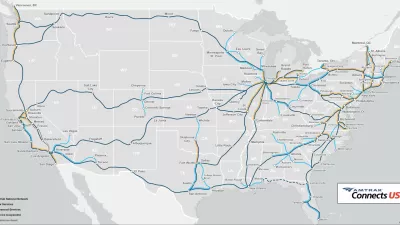To keep up with affordable housing demand, Snohomish County needs to add 200,000 units by 2050. Planned light rail stations could be the ticket.

Snohomish County's Fall 2020 Light Rail Communities program, as a part of an in-progress workshop to plan subareas around two proposed light rail station locations, has solicited feedback from the community about housing affordability, now and in the future. According to Shaun Kuo, the conversation comes at a time when affordable housing prospects are dwindling in Snohomish County.
"The County presents worsening figures for housing affordability, as new housing grew 7% slower than new households, there was a 50% to 67% decline in low rent housing in the county between 2011 and 2017, and 30% of homeowners and 50% of renters were cost burdened–spending more than 30% of their income on housing and utilities," Kuo reports. Lower rates of homeownership among Black, Indigenous, and people of color (BIPOC) communities shows that the burden of a lack of housing affordability tends to fall on these groups.
Given the need to add 200,000 units to the housing market by 2050, Snohomish County acknowledges that about half of the new stock should be subsidized low-income households and should be built around high capacity transit, Kuo says.
The article discusses Missing Middle Housing, incentives, inclusionary housing, and local housing projects as housing approaches to consider to increase affordable housing options in the county. Recently, the 2017 Census Bureau data reported that 65% of the county’s 300,000 housing units were detached single-family homes, 23% was multifamily, and under 7% was single-family attached–townhouses, duplexes, etc.
Another desired housing type: missing middle housing. "Middle housing isn’t precluded from Snohomish County’s development regulation and zoning, but one reason why that kind of housing is lacking is due to building industry cost models not favoring middle housing. The county’s Urban Core Subarea Plan will be reviewing existing development regulations to search for opportunities to encourage missing middle housing," writes Kuo.
The workshops acknowledge the potential impacts of light rail stations to increase housing cost rise and cause displacement as a result. "Preserving existing affordable housing and supporting the development of diverse dwelling sizes and types to meet the needs of the current and future population will be a part of the Urban Core Subarea Plan’s guiding principles," reassures Kuo.
FULL STORY: Snohomish County Light Rail Planning Turns toward Housing

Alabama: Trump Terminates Settlements for Black Communities Harmed By Raw Sewage
Trump deemed the landmark civil rights agreement “illegal DEI and environmental justice policy.”

Planetizen Federal Action Tracker
A weekly monitor of how Trump’s orders and actions are impacting planners and planning in America.

The 120 Year Old Tiny Home Villages That Sheltered San Francisco’s Earthquake Refugees
More than a century ago, San Francisco mobilized to house thousands of residents displaced by the 1906 earthquake. Could their strategy offer a model for the present?

In Both Crashes and Crime, Public Transportation is Far Safer than Driving
Contrary to popular assumptions, public transportation has far lower crash and crime rates than automobile travel. For safer communities, improve and encourage transit travel.

Report: Zoning Reforms Should Complement Nashville’s Ambitious Transit Plan
Without reform, restrictive zoning codes will limit the impact of the city’s planned transit expansion and could exclude some of the residents who depend on transit the most.

Judge Orders Release of Frozen IRA, IIJA Funding
The decision is a victory for environmental groups who charged that freezing funds for critical infrastructure and disaster response programs caused “real and irreparable harm” to communities.
Urban Design for Planners 1: Software Tools
This six-course series explores essential urban design concepts using open source software and equips planners with the tools they need to participate fully in the urban design process.
Planning for Universal Design
Learn the tools for implementing Universal Design in planning regulations.
Clanton & Associates, Inc.
Jessamine County Fiscal Court
Institute for Housing and Urban Development Studies (IHS)
City of Grandview
Harvard GSD Executive Education
Toledo-Lucas County Plan Commissions
Salt Lake City
NYU Wagner Graduate School of Public Service





























